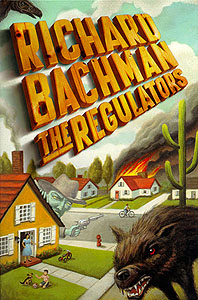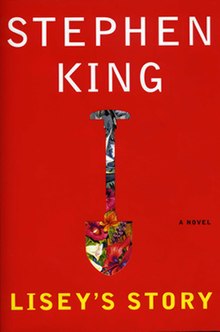Cujo: The Rabid St. Bernard From Cujo
Ah, Cujo. The name alone strikes fear into the hearts of dog lovers everywhere. This infamous St. Bernard has made quite a name for himself, not just in the fictional world, but in the minds of those who have read or watched his tale. Cujo, the rabid St. Bernard from Stephen King’s novel of the same name, has become a legendary figure in the horror genre. Let’s delve into the story of Cujo and discover what makes him such a compelling and terrifying character.
Cujo, a lovable and gentle giant in his normal state, transforms into a ferocious beast after being bitten by a rabid bat. This transformation takes him from man’s best friend to man’s worst nightmare. The once-beloved family pet becomes a relentless killing machine, terrorizing the small town of Castle Rock. With his massive size and uncontrollable rage, Cujo strikes fear into the hearts of anyone unlucky enough to cross his path.
As we explore the twisted and thrilling world of Cujo, we’ll come face to face with the horrors that lurk within the mind of Stephen King. We’ll witness the desperate struggle for survival as a mother and her son find themselves trapped in their car, besieged by Cujo’s relentless attacks. Prepare yourself for a bone-chilling ride as we uncover the dark secrets of Cujo, the rabid St. Bernard who has captured the imaginations of horror enthusiasts worldwide.

Cujo: The Rabid St. Bernard from Cujo
Cujo, the iconic character from Stephen King’s novel and subsequent film adaptation, is a St. Bernard known for his ferocity and terrifying transformation into a rabid beast. This beloved yet fearsome dog has left a lasting impression on audiences and has become a symbol of canine horror. In this article, we will delve into the origins of Cujo, explore his transformation, and discuss the impact he has had on popular culture.
The Origins of Cujo
Cujo was brought to life by acclaimed author Stephen King in his 1981 novel, also titled “Cujo.” The story revolves around the Camber family and their lovable St. Bernard, Cujo, who becomes infected with rabies after being bitten by a bat. As the disease takes hold of Cujo, he transforms from a gentle giant into a savage and bloodthirsty creature.
The character of Cujo was inspired by a real-life incident that King witnessed while staying at a stranger’s house. He saw a friendly St. Bernard who suddenly lunged at a passing car, seemingly possessed by an unknown force. This incident planted the seed for the story of Cujo and served as the foundation for the horror that unfolds in the novel and film.
The Transformation of Cujo
Cujo’s transformation from a beloved family pet to a terrifying monster is a pivotal aspect of his character. As the rabies virus takes hold of him, Cujo’s behavior becomes increasingly aggressive and violent. He loses his friendly and docile nature, becoming a relentless predator driven by an insatiable thirst for blood.
The transformation of Cujo is not only physical but also psychological. As the disease progresses, Cujo’s mind becomes consumed by rage and madness, leading him to commit unspeakable acts of violence. This aspect of his character taps into the fear of the unknown and the unpredictability of nature, making him a truly terrifying antagonist.
The Impact of Cujo on Popular Culture
Cujo’s portrayal in both the novel and the film adaptation has had a profound impact on popular culture. The story of a once-friendly dog turning into a vicious killer struck a chord with audiences and tapped into their primal fears. Cujo embodies the notion that even the most innocent creatures can become dangerous under the right circumstances.
The success of “Cujo” as a novel and film helped solidify Stephen King’s reputation as a master of horror. It also served as a reminder that the horrors we face in our everyday lives can sometimes be more terrifying than supernatural creatures or monsters. Cujo’s legacy lives on through the lasting impression he has left on readers and viewers alike.
The Legacy of Cujo
Cujo’s legacy extends beyond the confines of the novel and film. His name has become synonymous with ferocity and unpredictability, and he is often referenced in popular culture as a symbol of canine horror. Cujo serves as a cautionary tale, reminding us of the potential dangers that can lurk beneath the surface of even the most innocent-looking creatures.
In addition to his cultural impact, Cujo has also sparked discussions about the ethical treatment of animals and the responsibilities of pet owners. The story serves as a reminder of the importance of proper care, training, and vigilance when it comes to our furry friends.
The Enduring Fear of Cujo
Cujo’s enduring fear factor lies in his ability to tap into our primal instincts and exploit our fears of the unknown. The transformation from a friendly and loyal dog to a bloodthirsty monster serves as a reminder that appearances can be deceiving, and we must always be cautious and aware of the potential dangers that surround us.
The legacy of Cujo serves as a testament to the power of storytelling and the enduring impact of well-crafted characters. While Cujo may be a fictional creation, his presence lingers in our collective consciousness, reminding us that even the most lovable and innocent creatures can harbor a dark side.
In conclusion, Cujo, the rabid St. Bernard from the novel and film of the same name, is a character that has left a lasting impression on audiences. The origins of Cujo lie in a real-life incident witnessed by Stephen King, and his transformation into a rabid monster taps into our primal fears. Cujo’s impact on popular culture is undeniable, and his name has become synonymous with canine horror. The story of Cujo serves as a cautionary tale and a reminder of the potential dangers that can lurk beneath the surface of even the most innocent creatures.
Key Takeaways: Cujo: The Rabid St. Bernard from Cujo
- Cujo is a St. Bernard dog who becomes rabid after being bitten by a bat.
- The story of Cujo is a thrilling and suspenseful tale of a family’s encounter with the rabid dog.
- Cujo’s transformation from a friendly pet to a terrifying monster is a cautionary tale about the dangers of rabies.
- The novel “Cujo” written by Stephen King was later adapted into a movie.
- Cujo’s menacing presence and the intense struggle for survival make this story a must-read for horror fans.
Frequently Asked Questions
What is the story behind Cujo: The Rabid St. Bernard from Cujo?
Cujo is a famous novel written by Stephen King, published in 1981. The story revolves around a friendly St. Bernard named Cujo who becomes infected with rabies and turns into a vicious killer. The novel explores the terror and suspense that ensue as Cujo terrorizes a small town in Maine, trapping a mother and her young son in a car, and the desperate struggle for survival that follows.
The novel was later adapted into a film in 1983, directed by Lewis Teague. It remains one of King’s most iconic and chilling works, showcasing his ability to create tension and fear in the most unexpected places.
What makes Cujo such a terrifying character?
Cujo’s transformation from a lovable and gentle pet to a rabid monster is what makes him so terrifying. The fact that he was once a beloved family pet adds an element of tragedy to his story. As he succumbs to the rabies virus, Cujo becomes a relentless and unstoppable force, driven by his uncontrollable aggression.
Cujo’s size and strength as a St. Bernard also contribute to his terror. His massive frame and powerful jaws make him a formidable adversary, capable of inflicting severe harm. The combination of his physical prowess and his deteriorating mental state makes Cujo a truly formidable and horrifying antagonist.
How does Cujo’s story showcase Stephen King’s storytelling skills?
Cujo is a prime example of Stephen King’s ability to create suspense and tension in his storytelling. The novel masterfully builds up the horror, gradually escalating the danger and fear as Cujo’s rampage intensifies. King creates a sense of claustrophobia and helplessness by trapping the main characters inside a car, making their struggle for survival all the more harrowing.
King also delves into the psychological aspects of his characters, exploring their fears, vulnerabilities, and resilience in the face of unimaginable horror. Through his vivid descriptions and immersive writing style, King brings the town of Castle Rock to life and immerses readers in the terrifying world of Cujo.
What impact did Cujo have on the horror genre?
Cujo had a significant impact on the horror genre, solidifying Stephen King’s reputation as a master of horror. The novel pushed the boundaries of what was considered traditional horror, blending elements of supernatural terror with real-world horrors.
Cujo’s relentless and animalistic nature tapped into the primal fears of readers, inspiring a wave of animal horror stories in the years following its publication. It also highlighted the potential horrors that can lurk within seemingly innocent creatures, adding a new layer of terror to the genre.
Why is Cujo still relevant today?
Cujo remains relevant today because it taps into universal fears and explores the dark side of humanity. The novel examines the fragility of our sense of safety and the unpredictable nature of life. Cujo’s story serves as a reminder that danger can come from unexpected sources and that even the most innocent and beloved can turn into a terrifying threat.
Additionally, Cujo’s themes of isolation, survival, and the lengths we go to protect our loved ones continue to resonate with readers. The enduring popularity of Cujo showcases the timeless appeal of Stephen King’s storytelling and the enduring power of a well-crafted horror tale.
Cujo (7/8) Movie CLIP – Donna Is Bitten (1983) HD
Final Thought: Cujo, the Rabid St. Bernard from Cujo
And there you have it, the terrifying tale of Cujo, the rabid St. Bernard from Stephen King’s gripping novel. This ferocious canine has captivated readers and moviegoers alike with his chilling transformation from a lovable family pet to a bloodthirsty monster. But beyond the horror, Cujo serves as a cautionary tale about the dangers of neglecting our pets’ health and well-being.
As we bid farewell to Cujo, it’s important to remember the impact a well-crafted villain can have on a story. King’s vivid descriptions and suspenseful storytelling have kept readers on the edge of their seats, eagerly devouring every page. Cujo’s monstrous transformation reminds us that even the most innocent creatures can become a source of terror when pushed to their limits.
So, next time you come across a seemingly harmless St. Bernard, remember the tale of Cujo and approach with caution. And let us also take this opportunity to appreciate King’s genius in crafting a story that continues to haunt our nightmares. Cujo may be a work of fiction, but its impact is undeniably real.






